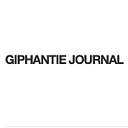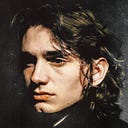The Photographic Veil: Jean Baudrillard’s Photographs
and Writing on Photography
Author ········· Taylor Dorrell
Published ······ March 23, 2020 on Giphantie Journal
For such a prolific thinker as the late Jean Baudrillard to not only write on a specific subject like photography, but to make his own photographs, places his work in a unique position for the viewer — one can’t help but take into account Baudrillard’s writing in relation to his photographs. The French philosopher and cultural theorist who is best known for his formulation of simulacra, simulation, and hyperreality, should without a doubt be accepted into the small realm of ‘photo theory’, or well-known intellectuals who have chosen to write on photography. His writings on simulacra, or the copy with no original, expands on Benjamin’s notion of display value (which Baudrillard touches on in his book Simulacra and Simulation), and simulation, or the blending of reality with representations of reality, couldn’t be more relevant in the age of Instagram, social media, virtual reality, and augmented reality. For Baudrillard to make photographs presented in the same forms as most photography, through books, galleries, and now online, we can’t simply look at his work without the gaze of Baudrillard. The presence of the Other is ever present in the objects he presents us (the same way for example, on the other end of the spectrum, the gaze of George W. Bush (the Iraq War, Financial Crisis, etc.) looks at us in Bush’s painted portraits of veterans).
In this way, the photographs act as a veil. We’re forced to ask “what analysis and theory has Baudrillard hidden under this veil of the picture?”. The viewer sees the gaze of the artist that establishes itself as the only gaze. Baudrillard is to the viewer what the psycho-analyst is to the analysand, Baudrillard is the ‘subject presumed to know’. As the viewer, or the analysand, we look at the picture as complete, as the gaze of the artist who holds all the answers to what’s underneath the veil of the picture. The work looks back at us and we are inclined to read it as a visualization, an embodiment, of Baudrillard’s thought.
Baudrillard’s images are fantasmatic in their abstract and unsettling perspectives. There’s a fantasy to the images in which our curiosity in the intent behind the images is in a way satisfied knowing that Baudrillard chose to frame this object. Our questions are squashed through a reliance on the Other, or the gaze of the artist. Baudrillard says in an interview, “That my photographs are beautiful or not does not interest me. The stakes are not aesthetic. It is more an anthropological arrangement that establishes a relationship with objects…… a glance on a fragment of a world allowing the other to come out from his or her context.” I claim that through the notoriety of the subject and his thought, the viewer sees a coming out of the Other through the photographic images, and this Other is Baudrillard.
While most known for works like Simulacra and Simulation, The System of Objects, and The Gulf War Did Not Take Place, Baudrillard wrote a short essay on photography, Photography, Or The Writing Of Light that in many ways connects his other works to photography specifically (I’ll write a more detailed account of the connection to his other works, but I’ll touch on the essential points in the essay here). First, and most foundationally, Baudrillard starts with the well known observation that photography is not objective. However, he goes further to specifically point out that it is through photography’s very paradox (being the most objective medium, yet still “non-objective”) that we are exposed to the fact that our world is “non-objective”. Through the technological and mechanical means of photography, there is a kind of flirting with the world, never overcoming or capturing it, but telling us that “nothing has been decided yet”. Photography, as a technique of giving the illusion of reality along with the inseparable nature of distorting it, tells us we can’t fully grasp the world we live in.
The miracle of photography, of its so-called objective image, is that it reveals a radically non-objective world. It is a paradox that the lack of objectivity of the world is disclosed by the photographic lens (objectif). Jean Baudrillard, Photography, Or The Writing Of Light, 2000
Baudrillard’s claim that “It is more an anthropological arrangement that establishes a relationship with objects” is perhaps most prevalent in his pictures that appear to play with perception through objects. In Photography, Or The Writing Of Light Baudrillard argues that photography is able to surpass the voice of the subject, or the photographer, in favor of the object. The photographic image has the ability to maintain a focus on surfaces, on light, and fragments over the subject — over what Jacques Lacan calls “che vuoi?”, or the moment when the viewer would say “ok, but what’s really going on here? What do you want out of this?”. Baudrillard claims that this lens based “photographic gaze” gives the object it’s “own magic”, its own gaze. He goes onto connect this gaze of the object to the light of the photographic image. A light that is not seen as coming from a physical source, but from the image itself as a photographic light, “…this light is the very imagination of the image, its own thought.” He claims, quoting Plato, that this light comes from two sources: the object and the gaze. The light then reveals the object as a thin shell, acting as photography does, to expose that there’s nothing that’s truly exposed or discovered, no objectivity, no object. In this first stage, the object appears to have its own weight and magic in absence of the subject. Then the object is exposed as an exterior, a mask of nothingness. We are left with an empty object and the gaze.
However, while in the early stage of this process the object is able to overtake the position of the subject, what comes into view in the light is not only the object in its exteriority and emptiness, but the gaze. The gaze of the photographic image looks to the viewer and the viewer’s gaze to the photographic image. In this gaze we find both the object and the subject. The viewer’s gaze surrenders to the gaze of the Other (the presence and influence of others on oneself). At this point both the object and the subject are dead to Baudrillard (the object first overtakes the subject, then the gaze of the Other overtakes the object). In this position, it appears that we are thrown into a paralyzing pit of contradiction where “people and things tend to no longer mean anything to each other”. We find either a nihilistic disavowal or a desire of forced signification. For Baudrillard, the Other is essential in maintaining a symbolic fiction in photography. To establish a signification that is not forced, photography must accept its place as a non-objective fiction. “The power of the image can only be restored by liberating the image from reality.”
So what is left when the object and the medium are exposed in their emptiness? Surely nobody has given up on photography entirely after developing a skepticism of objectivity. The reality is that photography is this contradiction, a kind of synthesis of emptiness and, more prominently, a symbolic order we rely on to structure our world — like language, analysis, etc… In its incompleteness, photography is complicit with the non-objective world we live in. Baudrillard adds that this complicity is a dance of fiction, a move to action, and an equation for existence through “acting it out”. As an attempted representation of reality, Baudrillard claims that “The photographic image is not a representation; it is a fiction.” The world then returns a skeptical glance to the photographic image and in turn imposes its own fiction in response. “Photography brings the world into action… and the world steps into the photographic act. This creates a material complicity between us and the world since the world is never anything more than a continuous move to action (a continuous acting out).” There’s a dialectic between the fiction that symbolises our reality and the fiction that is our reality.
In Baudrillard’s photographs, the objects that lay no claim to objectivity are, in their very lack of objectivity, a perfect fiction balancing the world with a mechanical lens based medium. Underneath the external shells of the objects offer no claim to the Real, instead illuminate the gaze of the subject — the gaze of Baudrillard. Like the drawing of the sheep in the french childrens book, The Little Prince, the prince asks the pilot for a drawing of a sheep. Each drawing is dismissed as not being quite what he had in mind. It’s not until the pilot, frustrated, draws a box with air holes in it and says “This is only his box. The sheep you asked for is inside.” to which the Prince replies, “That is exactly the way I wanted it!” Desire, if we use the Lacanian definition (desire is the desire of the Other), is projected as the desire of the viewer through Baudrillard. The viewer is engaged with objects, but instead of the objects having their own magical qualities in themselves more than themselves, they have a magical quality in relation to the subject presumed to know, Baudrillard. The images are signifiers for the viewer, who finds a desire through the desire of the Other (Baudrillard who chose to make the images, or through other intellectuals who interpret his work) and in turn expose their own desire. It is only through photography, a silent medium (as Baudrillard calls it), or the boxing of the sheep, that the viewer sees a complete image of what they really want through their inability to grasp it. The viewer is drawn to Baudrillard’s photographs not because of the object or subject independently, but the relationship between the two through the silent medium of photography. Baudrillard doesn’t attempt to saddle the objects, to conquer them and give them a kind of objective justice (to draw the sheep directly), but instead understands the place of photography in relation to the world, the object, and the subject. We are exposed to a photography that utilizes objects through a subject, generating a friendly fiction with reality — a veiling of meaning and desire.
Is it like the rearview mirrors of American cars which distort visual perspectives but give you a nice warning
– -“objects in this mirror may be closer than they appear”? But, in fact, aren’t these objects farther than they appear? Does the photographic image bring us closer to a so-called “real world” which is in fact infinitely distant? Or does this image keep the world at a distance by creating an artificial depth perception which protects us from the imminent presence of the objects and from their virtual danger?… What is at stake (at play, en jeu) is the place of reality, the question of its degree. Jean Baudrillard, Photography, Or The Writing Of Light, 2000
See Baudrillard’s photographs in his photo book Photographies 1985–1998 or see images from a 2015 gallery show Ultimate Paradox.

